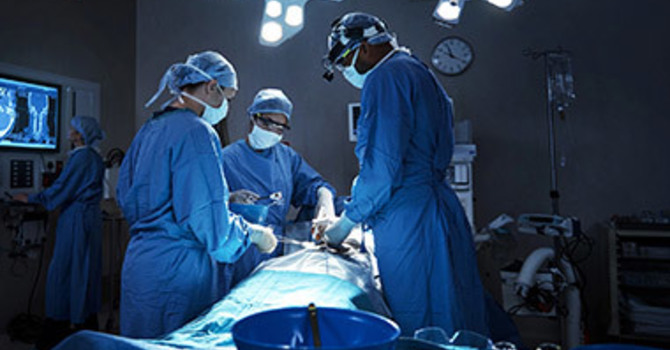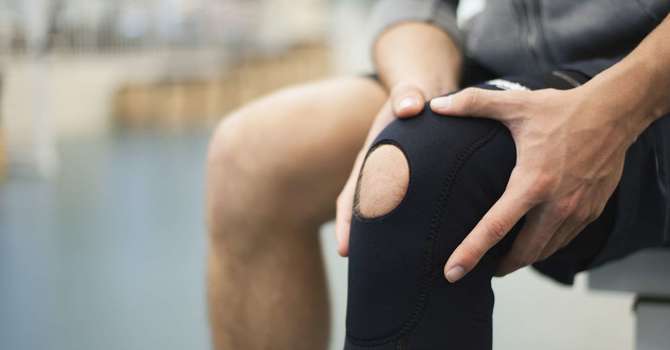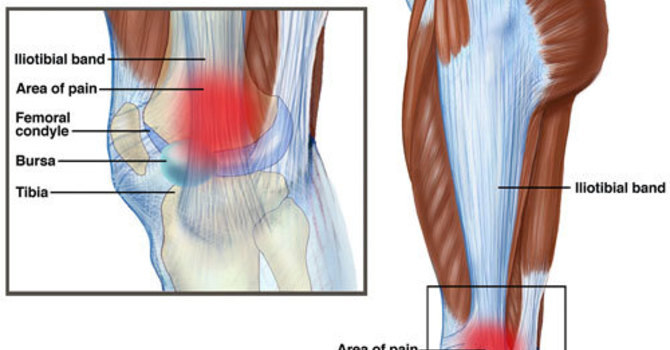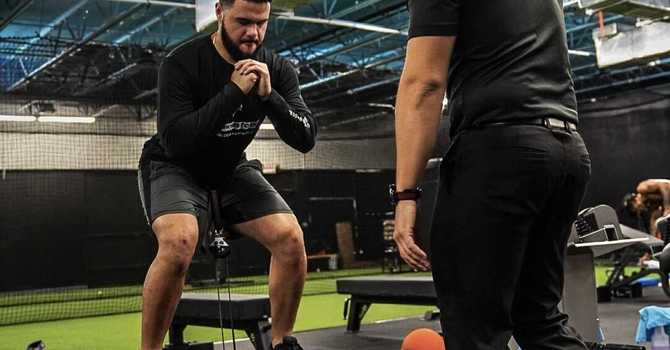Knee Pain Can Be Very Frustrating To Manage During Workouts, Sports, And Daily Life
Knee pain can be caused by several reasons including repetitive stress, poor biomechanics, trauma, sport-related injuries, and more.
The Best Chiropractor for Knee Pain in Tampa and St. Pete
At Strength & Spine, Knee pain and injuries are the second most common area we examine and treat.
Knee pain typically occurs at the joint line and the most common form of knee pain is due to injury of the meniscus or ligaments such as the ACL.
The Knee consists of bones, ligaments, cartilage, and tendons and can have a multitude of diagnoses.
The knee joint's main function is flexion and extension, however, has a little internal and external rotation.
Because the knee joint is meant to be a stable joint, the knee may bare the load the hip and ankle joints are not able to tolerate. This may lead to injury of the knee and is why a proper evaluation of biomechanics and movement is critical for determining the source of the knee pain.
Common Knee Injuries Treated:
- Meniscus Tear
- ACL/PCL Tear
- MCL/LCL Sprain
- Patellar Tendinitis (Jumper’s Knee)
- IT Band Syndrome (Runner’s Knee)
- Osgood-Schlatter
- Bursitis
- Patellofemoral pain syndrome
- Osteoarthritis
Meniscus Injury
One of the most common injuries of the Knee
The knee menisci are fibrocartilage discs that are shock-abosrbent material that play an important role in biomechanics. The medial and lateral meniscus primary role is to transmit compressive loads in knee flexion and extension. Injury often occus with a sudden twist on a loaded knee or with deep knee bends.
Common Symptoms include
- Joint Line Tenderness
- Increased Swelling or Fluid at anterior or posterior knee
- Increased Pain with deep knee flexion
Research consistently shows an in-depth rehabilitation program is vital to recovering from a Meniscus Injury and reducing the risk of re-injury. It is entirely possible to recover from a meniscus tear without surgery and Strength & Spine Chiropractic can help reduce your risk of needing surgery.
ACL Tear
Although most ACL tears require surgery, some can recovery fully without surgery!
Tearing an ACL can affect all aspects of you life, especially your physical activity and sports. The biggest thing after thinking you tore your ACL is to get the proper exam and imaging done to ensure the correct plan of action is taken. If it is determined that it is fully torn and you need surgery, a referral to an orthopedic surgeon is made. For those that are mildly sprained or are not athletes, ACL tears can be fully rehabbed without needing surgery, however, this does take quite some time.
Since Strength & Spine tailors to athletes in Tampa and St. Pete, we see a lot of post-surgical ACL tears and mild ACL sprains. We have all the tools and education necessary to help an individual return to sport throughout their rehab process. For most people and athletes, an ACL tear will result in needing extensive rehab over 9-12 months. The good news is that our office has all the modalities needed to help the physiological healing needed to reduce pain, reduce inflammation, and increase range of motion as fast as we can.
For those who think they have an ACL tear, below are the common signs and symptoms:
- feeling unstable or like it will give out
- excessive swelling of the knee
- pain with leg extension
- excessive cramping or tightness of the hamstring of the affected leg
Collateral Ligament Sprain
The Medial collateral ligament (MCL) or Lateral collateral ligament (LCL)
The medial and collateral ligaments consists of connective tissue that connect to stabilize the knee in addition to the ACL and PCL. Injuries to the collaeral ligaments more often are caused by a direct hit to the knee but can also be a non-contact injury. These ligaments are made of collagen that are stronger but when excessively stretch cause the ligament to sprain. These can be further classified into Mild (Grade 1), Moderate (Grade 2), or Severe (Grade 3) sprains.
The MCL is the most common ligament injury of the knee. It attaches from the femur to the tibia medially. This is often from valgus stress that can be detrimental to not only the MCL but other surrounding structures.
Common mechanisms of injury
- Direct contact to the outer lower thigh or upper leg
- Valgus Stress (lateral to medial contact)
- Force applied to outside of knee with a planted foot
The LCL stabilizes the lateral side of the knee, with the main mechanism being from varus stress. Anatomically it connects the femur to the fibula on the outside of your knee.
Common mechanisms of injury
- Direct contact to anteromedial knee and posterolateral knee
- Varus Stress (medial to lateral contact)
- Non-contact hyperextension
Patellar Tendinitis
Commonly referred to as Jumper's Knee
Patellar Tendinitis is an injury of the tendon that connects the kneecap (patella) to your tibia. There is micro-tearing or degeneration of this attachment at the inferior region of the patella that can affect up to 50% of athletes who perform in repetitive forceful jumping sports like volleyball or basketball; however, others who don't participate in jumping sports can get patellar tendinitis.
Some young athletes also have a similar condition, called Osgood Schlatter Disease, which is pain and swelling over the tibial tuberosity that progressively worsens. It is a biomechanical weak point that happens when training exceeds the ability of the muscles and tendons to accommodate these stresses. This usually results in a palpable tender growth at the insertion of the patellar tendon to the top of the tibial bone.
Shockwave therapy has been a game changer for us in these cases and has been shown to significantly decrease the pain that accompanies patellar tendinopathy patients. In addition, it is important to correctly manage the workload and stress that the knee can tolerate as absolute rest could increase the risk of recurrence. Rehabilitative exercises are imperative as they will not only improve your pain symptoms but also decrease your risk of recurrence and long-term outcomes.
How Chiropractic Care Helps:
Although chiropractors can adjust/manipulate the knee joint, most of the knee pain can be helped by programming a specific physical rehabilitation program to develop the strength and endurance of the musculature supporting the knee. Myofascial release around the knee and surrounding structures is also highly beneficial to treating knee pain and allowing for a greater range of motion.
Knee Injuries at Strength & Spine Chiropractic Can Be Treated With:
- Shockwave Therapy
- Myofascial Release
- WINBACK TECAR Therapy
- Class IV Laser
- Instrument-Assisted Soft Tissue Manipulation
- NXPro Interactive Neuromuscular Stimulation
- Blood Flow Restriction Training
- Individualized Rehab Program






